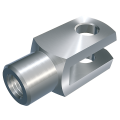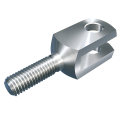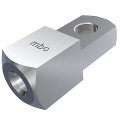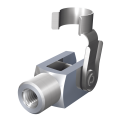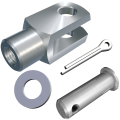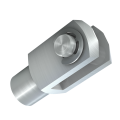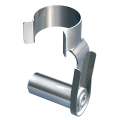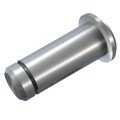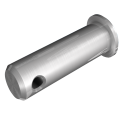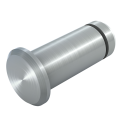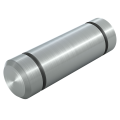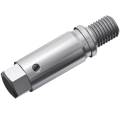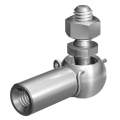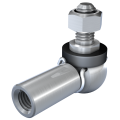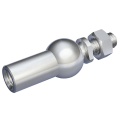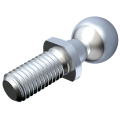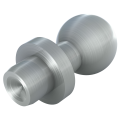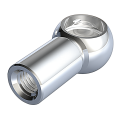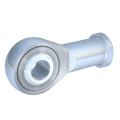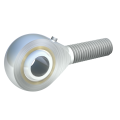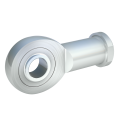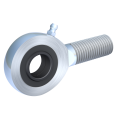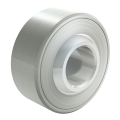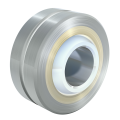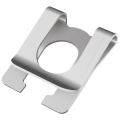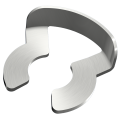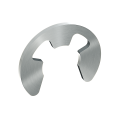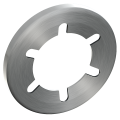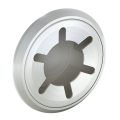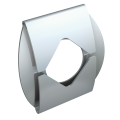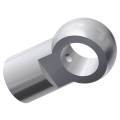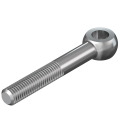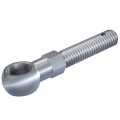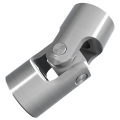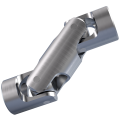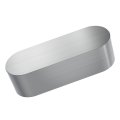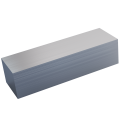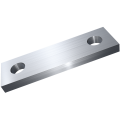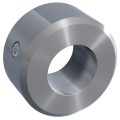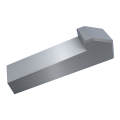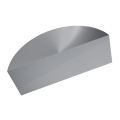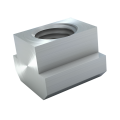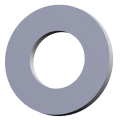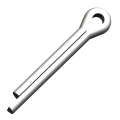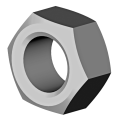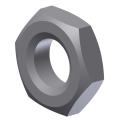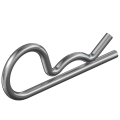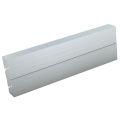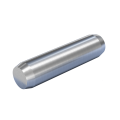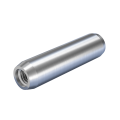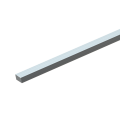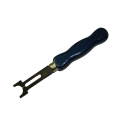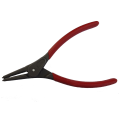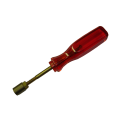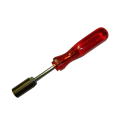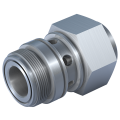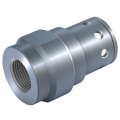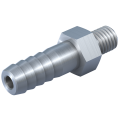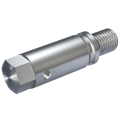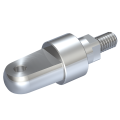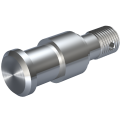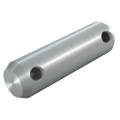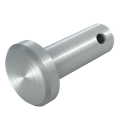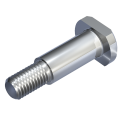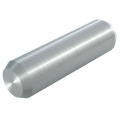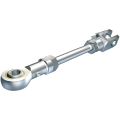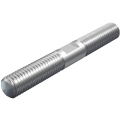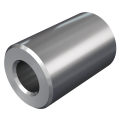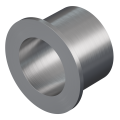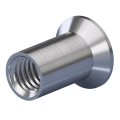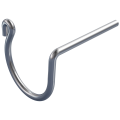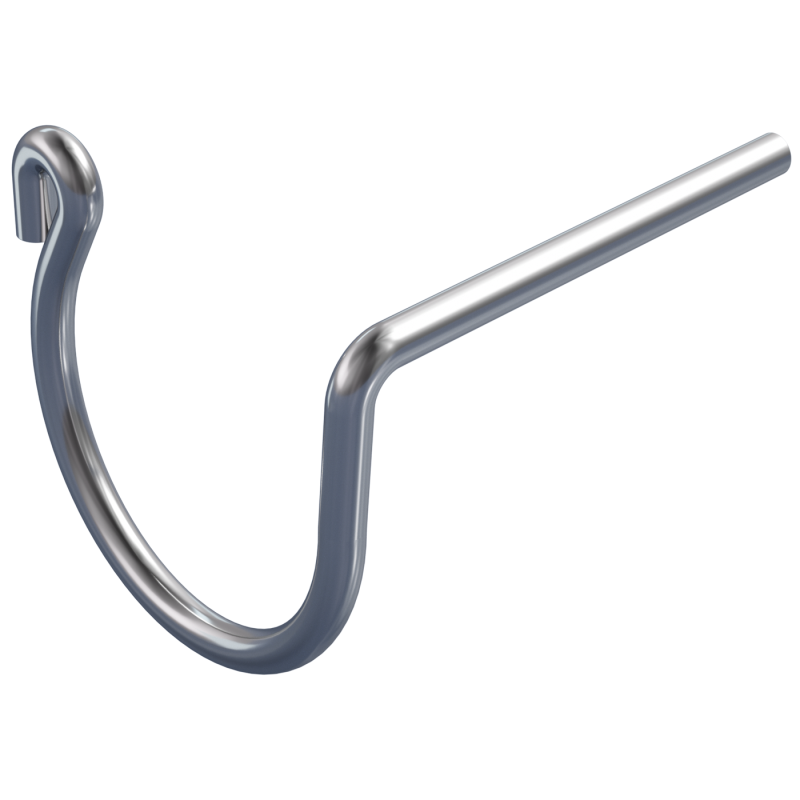Fast-track this part (max. 400 units) through our production facility. Shorten the delivery time by 1-2 working days. We are currently exclusively testing this delivery service for Germany.
incl. VAT
plus shipping costs
To cancel your filter settings again, click on the "Clear" button below the table.
You can display product details, including the eShop function and 3D model , by clicking in the row corresponding to the required article.
1. Product description
The circlip DIN 71805 form S is a precisely manufactured mechanical retaining element, specifically developed to ensure a reliable connection and securing in industrial applications. It is particularly designed to prevent the loosening of ball sockets DIN 71805 form B and ball studs according to DIN 71803, which are used in angle joints according to DIN 71802.
Thanks to its S-shaped structure, the circlip offers a stable and durable fixation that withstands high mechanical loads. Made from high-quality stainless steel, the circlip is robust, corrosion-resistant, and suitable for use in demanding environments. Its specific shape allows it to be easily and securely inserted through the designated bore in the ball sockets, ensuring a firm and permanent connection. This effectively prevents the unintentional loosening or slipping of the connected parts, which is especially important in safety-critical applications.
Hence, the circlip DIN 71805 form S significantly contributes to the efficiency and safety in various industrial applications by supporting the functionality of angle joints according to DIN 71802 and ensuring that ball sockets and ball studs remain securely and reliably fastened.
2. Product details
Size: S 8 - S 19
Material group: Stainless steel, stainless steel A4 quality
Surface: bright
3. Application Areas & Compatibility
The circlip DIN 71805 form S is specially used in conjunction with angle joints according to DIN 71802 to ensure their functionality and reliability. The combination of these two components creates reliable and stable connections that are essential in numerous industrial applications. The following sections will discuss the specific areas of application and compatibility in more detail:
Fields of Application
Mechanical engineering: Angle joints with secured ball sockets and ball studs prevent connections from coming loose in machines. The circlip ensures a permanent connection in movable parts like couplings or linkages.
Automotive engineering: In vehicles, angle joints are often used in steering control arms, gear linkages, and suspension systems. The circlip prevents unintended disconnection, ensuring the safety and efficiency of vehicle components.
Agricultural machinery: When used in agricultural machinery, such as trailers and hydraulic systems, angle joints are protected from loosening by circlips, ensuring high operational safety.
Construction and civil engineering: Angle joints serve in construction scaffolds and constructions for mobility and stabilization. The circlip ensures that connections remain permanently stable and withstand external loads.
Compatibility
The circlip DIN 71805 form S is specifically tailored for use with angle joints according to DIN 71802. It prevents the loosening of ball sockets according to DIN 71805 and ball studs according to DIN 71803. This usage ensures high compatibility and easy handling because the standards are compatible and enable a reliable mechanical connection.
The combination of circlips according to DIN 71805 and angle joints according to DIN 71802 thus offers an optimal solution for various industrial applications. It ensures easy assembly, high load capacity, and long-term reliability of connection systems, leading to higher safety standards and more efficient operation in many industrial sectors.
4. Advantages and Benefits
Reliability: Due to their construction, circlips ensure stable and reliable connections that remain secure even under high loads. This is particularly crucial in industries such as mechanical engineering and automotive manufacturing.
Flexibility: Thanks to their standardized design, circlips can be used in many industries. Whether in machinery, vehicles, or agricultural equipment—their versatility reduces the need for different spare parts.
Durability: The stainless steel variants are corrosion-resistant, allowing them to last long even in damp or aggressive environments. This increases the lifespan of connections and minimizes maintenance effort.
Easy handling: Circlips can be assembled and disassembled quickly without special tools. This saves time during installation and reduces downtime during maintenance work.
Standard-compliant manufacturing: As circlips are manufactured according to DIN standards, they are compatible and interchangeable with other standardized components. This allows for easy integration into existing systems and guarantees consistent quality.
5. Assembly and Installation
The assembly and installation of circlips DIN 71805 in conjunction with ball sockets and ball studs is simple and efficient. Here are the steps for proper fastening:
Component check: Ensure that all parts to be installed (circlips, ball sockets, ball studs) are clean and free of damage.
Inserting the ball stud: Insert the ball stud into the ball socket until it is fully seated and a firm connection is formed. Make sure that the ball stud sits securely in the ball socket and can move freely.
Attaching the circlip: Insert the circlip into the designated hole in the ball socket.
Locking in place: Push the circlip over the shaft of the ball socket into the designated groove until it clicks audibly into place. If necessary, you can use pliers to fully close the circlip.
Check fit: Ensure that the circlip is properly and securely seated and that it stabilizes the ball stud in the ball socket.
Test mobility: Check the mobility of the connection to ensure that the ball stud can freely rotate in the ball socket.
6. Safety instructions & Standards
Personal protective equipment: Always wear appropriate personal protective equipment (PPE), such as work gloves and safety glasses, to prevent injuries during assembly.
Inspection of Components: Before installation, all components should be checked for damage or signs of wear. Use only flawless parts.
Proper Handling: Handle circlips and associated components carefully to prevent damage or deformation. Damaged parts should not be used.
Correct Installation: Ensure that the circlip is fully and correctly engaged. Improper assembly can lead to a connection failure.
Tools: If tools are used, ensure they are suitable and in good condition to ensure a safe installation.
Relevant Standards
DIN 71805: This standard defines the requirements for circlips and ball sockets, including their dimensions, materials, and load capacity. Compliance with this standard ensures compatibility and interchangeability of the circlips.
DIN ISO 9001: This international standard for quality management systems ensures that products consistently meet high quality and fulfill customer requirements.

